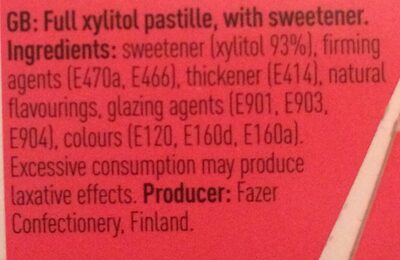Xylimax Moomin - Fazer - 55g
This product page is not complete. You can help to complete it by editing it and adding more data from the photos we have, or by taking more photos using the app for Android or iPhone/iPad. Thank you!
×
Barcode: 6416453117334 (EAN / EAN-13)
Common name: Full xylitol pastille, with sweetener
Quantity: 55g
Brands: Fazer
Categories: Snacks, Sweet snacks, Sweeteners, Food additives, Sugar substitutes, Natural sugar substitutes, Xylitol
Labels, certifications, awards: Excessive consumption can have laxative effects
Manufacturing or processing places: Finland
Matching with your preferences
Environment
Packaging
Transportation
Report a problem
Data sources
Product added on by kiliweb
Last edit of product page on by refueling2134.
Product page also edited by arc2, hungergames, jumati, openfoodfacts-contributors, yuka.ZjZJN05JUS9oY0pRa01GaXhRakhxdjhzbmFXQ0JsbnJDT05PSVE9PQ.




